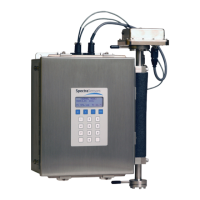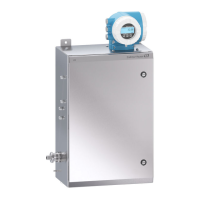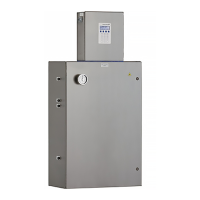Maintaining & Troubleshooting
Hardware Installation and Maintenance Manual B
–19
Instrument Problems
If the instrument does not appear to be hampered by gas leaks, contamination,
excessive sampling gas temperatures and pressures, or electrical noise, refer
to Table B–1 before contacting Customer Service.
Table B–1 Potential instrument problems and solutions
Symptom Response
Non-Operation (at start up) Is the power connected to both the ana-
lyzer and power source? Is the switch
on?
Non-Operation (after start up) Is the power source good? (100-250 VAC
@ 50-60 Hz, 9-16 VDC, 18-32 VDC).
Check fuse(s). If bad, replace with
equivalent amperage, slow-blow fuse.
Refer to “Service Contact” on page
B-22 for service information.
Power Fail Error Turn off the power to the unit and check
the optical head cables for a loose con-
nection. Do not disconnect or recon-
nect any optical head cables with
the power connected.
Refer to the Firmware Manual for this
analyzer to verify a Power Fail error.
Check the inlet and outlet tubes to see if
they are under any stress. Remove the
connections to the inlet and outlet tubes
and see if the power goes up. The exist-
ing tubing may need to be replaced with
stainless steel flexible tubing.
Possible mirror contamination issue.
Refer to “Service Contact” on page
B-22 for service information. If advised
to do so, clean the mirrors by following
the instructions under “To clean the
glass mirrors” on page B-5.
Possible alignment problem. Refer to
“Service Contact” on page B-22 for
service information.
Capture diagnostic data and send the file
to SpectraSensors (see “To read diag-
nostic data with HyperTerminal” in
the Firmware Manual for this analyzer).

